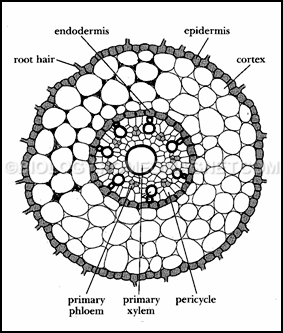Botany related pages:
- Botany
- Taxonomy
- Cell Fractionation
- Tracer Techniques
- Herbarium
- Plant Kingdom Classification
- Virus
- Structure of Virus
- Viral Infection
- Viral Replication
- Bacteria
- Classification of Bacteria
- Bacterial Cell Structure
- Reproduction of Bacteria
- Helpful Bacteria
- Others Helpful Bacteria
- Fungi
- Classification of Fungi
- Uses of Fungi
- Algae
- Red Algae
- Brown Algae
- Green Algae
- Economic Importance of Algae
- Lichens
- Moss Plant
- Non flowering Plants
- Plant Growth
- Plant Growth Regulators
- Macronutrients for Plants
- Micronutrients in plants
- Plant Movement
- Plant Tissue
- Simple tissue
- Vascular Tissue
- Vascular Bundle
- Tree roots
- Root Function
- Plant stem
- Nature of plant stem
- Function of Stem
- Stem Modifications
- Aerial Stem Modifications
- Sub Aerial Stem Modification
- Tree Leaves
- Anatomy of Leaf
- Chloroplast
- Chlorophyll
- Plant Fertilization
- Pollination
- Cross-pollination
- Plant Breeding
- Plant water relation
- Ascent of Sap
- Transpiration
- Affecting Factors of Transpiration
- Types of Fruits
- Seed Structure
- Seed Germination
- Types of germination
- Dispersal of Seeds
- Types of Flowers
- Flower Parts
- Floral Diagram
- Calyx
- Corolla
- Inflorescence
- Minerals Nutrition
- Auxin
A single cell which may be the fertilised egg or the zygote, from where the life of an organism is starts. This single cell undergoes repeated mitotic division to form a multi-cellular embryo and finally the organism gradually differentiates. The stages of formation of a multi-cellular organism are as follow:
Cells → tissue → tissue system → organ → organ system → body.
But in the unicellular organism all physiological functions are carried out by a single cell, so this organisation is not found. In higher plants, tissue systems are of three types; those are:
1) Epidermal
2) Ground
3) Vascular.
What is tissue?
A tissue is defined as a group of organised cells with a common origin, function and similar or different structures. We are going to have a brief discussion about the plant tissue.
Classification of plant tissue: –
The plant tissue can be classified into three categories on the basis of the divisional power.
1) Meristematic tissue: It can be broadly classified on the basis of origin, occurrence, function and division.
2) Permanent tissue: It can be simple or complex.
3) Special tissue: It can be broadly classified into External secretory and internal secretory types. Actually it is a permanent tissue.
The group of cells with similar origin and function and having similar or dissimilar structure, constitute a tissue.
The plant tissue which is in active state of division is known as meristematic tissue or meristem. They may be classified on the basis of occurrence as apical, intercalary and lateral meristem, on the basis of origin as primary and secondary meristem, on the basis of function as protoderm, pro-cambium and ground meristem and as rib meristem, plate meristem and mass meristem on plane and division basis.
The plant tissue which has not any power of division is called permanent tissue. It can be classified primarily into three types as simple complex and special tissue. The simple permanent tissues have similar type of cells and they are of three types. Those are the parenchyma, the collenchymas and the sclerenchyma. The parenchyma tissues have thin cellulosic walls; the collenchymas of the plant tissue have unequally thickened walls. On the other hand sclerenchymas are dead elements with evenly thickened walls.
The permanent tissue with heterogeneous elements is known as complex tissue. This plant tissue is mainly of two types, i.e., xylem and phloem. Both of them constitute the vascular bundle. Xylem tissue is composed of four major elements. Those are the tracheid, the trachea, the xylem parenchyma and the xylem fibres. One of them that are the xylem parenchyma is only the living tissue. Likewise the phloem elements include sieve cells, sieve tubes, companion cells, phloem- parenchyma and phloem fibres. Sieve cells are common in gymnosperms and pteridophytes, but sieve tube is common in angiosperms.
In plant tissue the xylem conducts minerals and water from the roots to leaves in upward direction; on the other hand the phloem brought the prepared food from leaves to upward, downward and lateral directions. Sieve elements are living without nucleus, while phloem parenchyma and companion cells are living but phloem fibres are dead elements.
The special plant tissue includes specific group of cells with specialised function of secretion. They are either secretory or excretory in nature.



